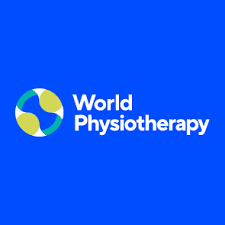1. Plan and conduct a structured, comprehensive client-centred assessment and physiotherapy examination
of the client, or needs of a client group, including socio-economic, personal, and environmental factors,
and screening for differential diagnosis.
2. Evaluate the findings from the assessment/examination to identify and prioritise client problems and
negotiate achievable and measurable functional and clinical outcomes.
3 Formulate a diagnosis to guide physiotherapists in determining the prognosis and most appropriate,
evidence-based intervention/education strategies for clients by using clinical reasoning, that results
in the identification of existing or potential impairments, activity limitations, participation restrictions,
environmental influences or abilities/disabilities
4 Establish client-centred goals and develop an individualised plan of evidence-based intervention using a
context specific, active, functional rehabilitation approach in full collaboration with the client/carers.
5 Safely and effectively implement physiotherapy interventions, making appropriate use of technologies
to restore integrity of body systems essential to movement; to maximise function and recuperation; to
minimise incapacity; and to enhance quality of life, physical and mental health, wellbeing, independent
living and workability in individuals and groups with altered movement behaviours resulting from
impairments, activity limitations, participatory restrictions or disabilities through:
• therapeutic exercise.
• functional training in self-care and home management.
• functional training work, community, and leisure.
• manual therapy techniques (including mobilisation/manipulation).
• prescription, application, and, as appropriate, fabrication of devices and equipment (assistive, adaptive, orthotic, protective, supportive, and prosthetic).
• airway clearance techniques.
• integumentary repair and protection techniques.
• electrotherapeutic modalities.
• physical agents and mechanical modalities.
• client-related instruction.
• health promotion and prevention of impairments, activity limitations, participatory restrictions, and
disabilities in individuals at risk of altered movement behaviours due to health, socio-economic,
environmental, and lifestyle factors.
• modifying environmental, home and work access, and barriers to ensure full participation in one’s
societal roles.

6 Regularly monitor, measure, record, and evaluate the outcomes of intervention using valid and reliable
measures and, if necessary, make modifications to the planned intervention.
7 Judge the need for referral or discharge if the diagnostic process reveals findings that are not within the
scope of the physiotherapist’s knowledge, experience or expertise; refer the client to another appropriate
practitioner and facilitate transition from physiotherapy to the care of another professional; or discharge,
securing optimal social participation for the client.
8 Deliver services in the most appropriate and safe setting (for example, clinic, community, home, school);
via the most appropriate mode (for example, in person or digitally); considering the circumstances (for
example, socio-economic status, family situation) and potential systemic barriers (for example, disability,
gender, age, race, ethnicity, geographic location); and including whether a direct physical examination is
required, and whether a client is able to receive care in a specific setting, or remotely.
Fuente: World Physiotherapy
 Blog de Fisioterapia Fisioterapia
Blog de Fisioterapia Fisioterapia



